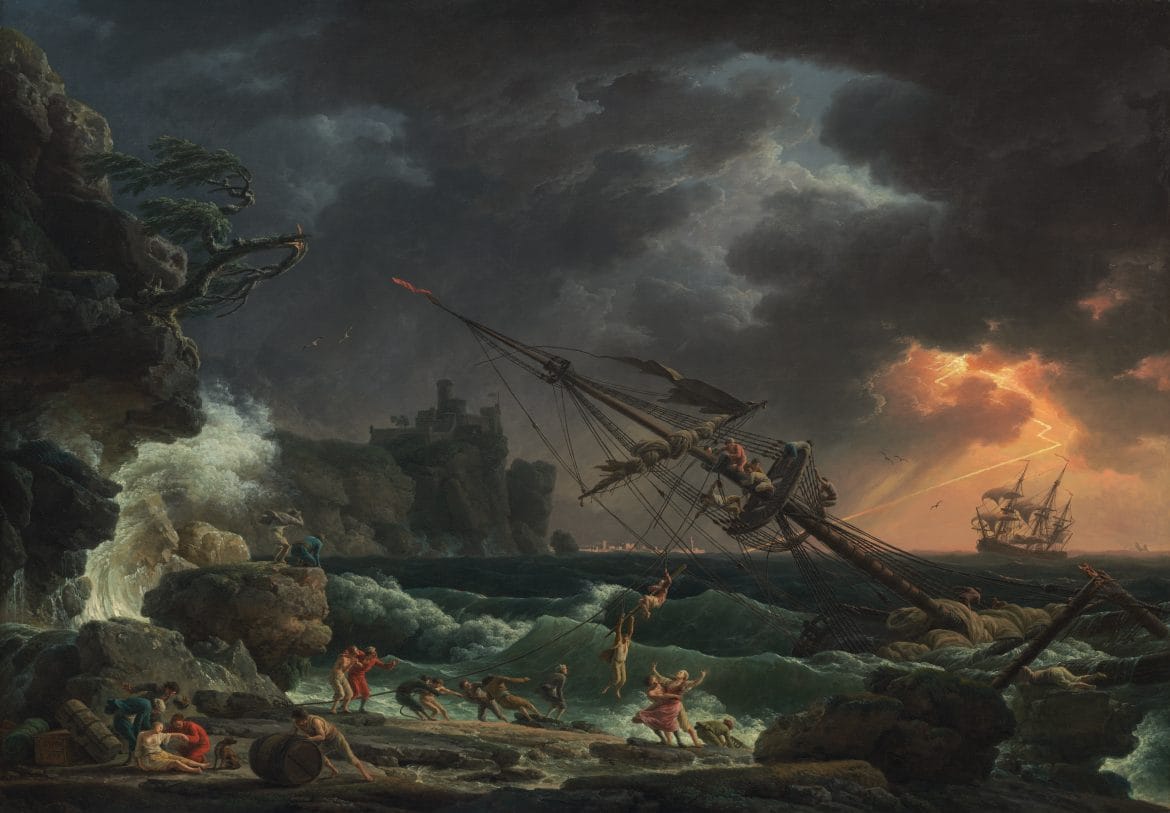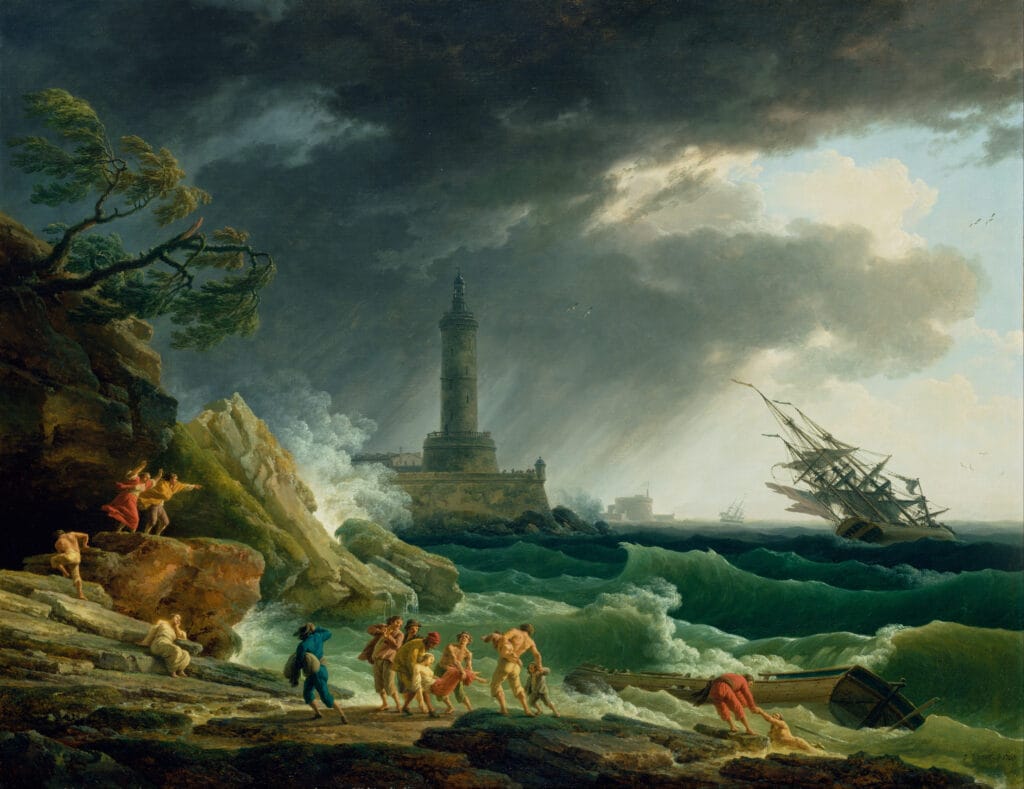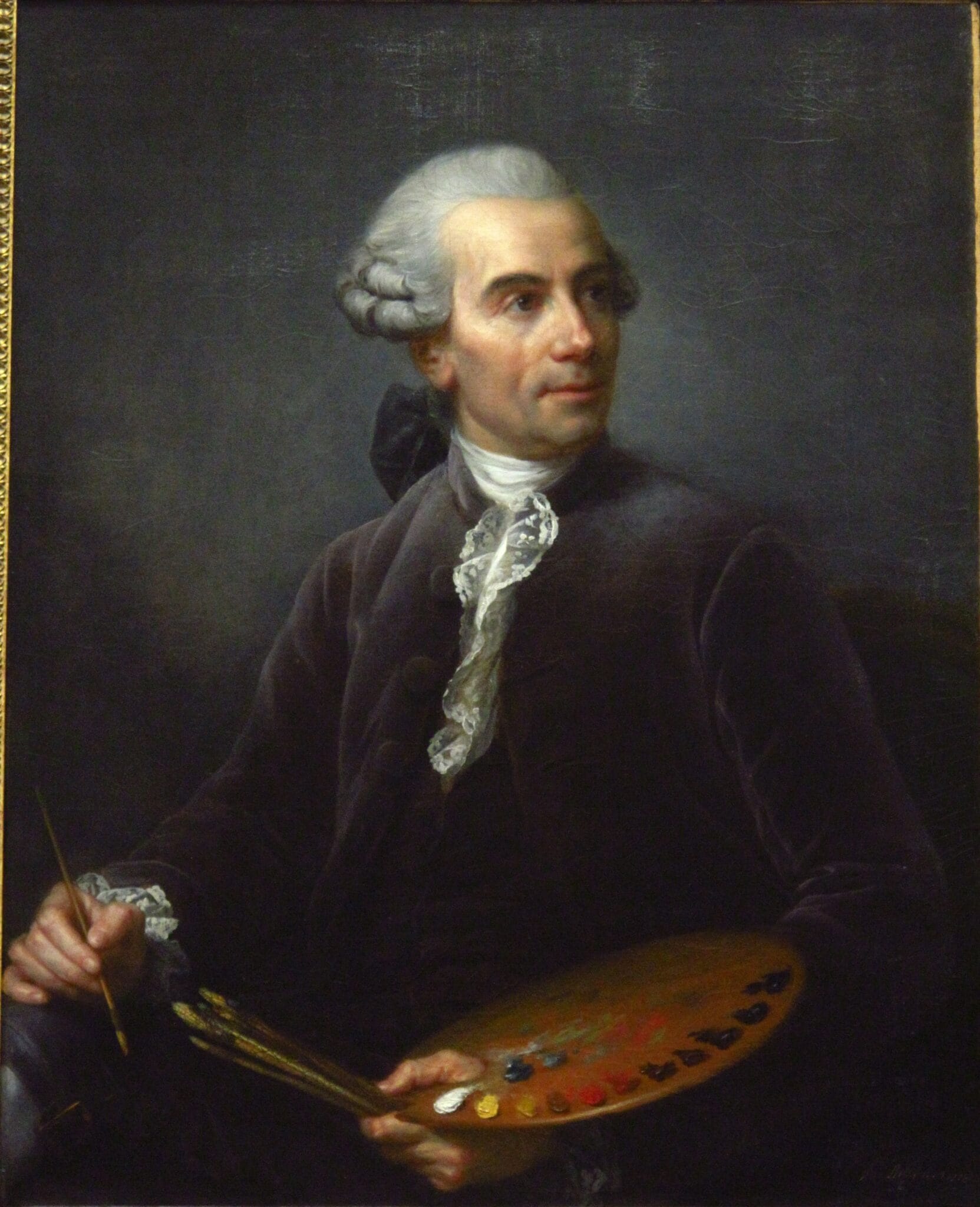Claude-Joseph Vernet (1714-1789) was a French painter who specialized in marine landscapes, or seascapes. His talent for capturing the beauty and power of the sea earned him widespread acclaim during his lifetime and has ensured his place in art history as one of the greatest marine painters of all time. In this comprehensive guide, we will delve into the life and work of Vernet, exploring his early years, artistic beginnings, and the significance of his unique approach to marine painting. We will also discuss his most famous masterpieces, techniques and themes, and his enduring influence on subsequent artists and the marine painting genre.
The Early Years and Artistic Beginnings of Vernet
Claude-Joseph Vernet was born on August 14, 1714, in Avignon, France. His father, Antoine Vernet, was a decorative painter, and it was under his tutelage that young Vernet first learned to paint. However, it wasn’t until he moved to Rome in 1734 that Vernet discovered his true passion for marine painting. Inspired by the Mediterranean Sea and the bustling port of Rome, he began to create vivid and detailed seascapes that showcased his exceptional talent for capturing the changing moods of the sea and its surrounding landscape.
During his time in Rome, Vernet studied under the Italian marine painter Adrien Manglard, who greatly influenced his style and technique. Vernet’s early works in Rome were characterized by the use of soft colors, delicate brushwork, and an overall sense of tranquility. As his skills and confidence grew, he began to develop his own distinct style, which combined the classical principles of Italian art with the atmospheric effects and naturalism of Dutch marine painting.

The Significance of Marine Painting in the 18th Century
Marine painting gained prominence in the 18th century, as European nations competed for maritime supremacy and sought to establish their prowess on the high seas. The genre allowed artists to capture the majesty of the ocean and the vessels that traversed it, as well as to depict dramatic naval battles and heroic feats of exploration. Marine painting served both as a form of entertainment and as a means of instilling national pride in viewers.
In France, the 18th century was a period of artistic and cultural flourishing known as the Enlightenment. During this time, French artists and intellectuals sought to elevate their nation’s cultural prestige and assert its dominance on the world stage. Marine painting played a significant role in this effort, as it allowed French artists like Vernet to showcase the power and beauty of their country’s naval fleet and coastal landscapes.
Vernet’s Unique Approach to Marine Painting
Claude-Joseph Vernet’s approach to marine painting set him apart from his contemporaries and earned him widespread acclaim. While many marine painters of the time focused solely on the depiction of ships and naval engagements, Vernet was more interested in capturing the vastness and ever-changing moods of the sea itself. His work is characterized by an extraordinary attention to detail and a remarkable ability to convey the subtle shifts in light and atmosphere that occur in the natural world.
Vernet’s seascapes often feature dramatic weather conditions, such as stormy skies, crashing waves, and rain-swept coastlines. He had a keen understanding of the powerful forces at work in nature and sought to convey this in his art. His works are also notable for their inclusion of human figures, which serve to emphasize the scale and grandeur of the marine environment.

Famous Masterpieces of Claude-Joseph Vernet
Throughout his career, Vernet produced numerous masterpieces that showcased his exceptional skill and unique approach to marine painting. Some of his most famous works include:
- The Shipwreck (1759) – This painting depicts a dramatic scene of a shipwreck off the coast of a rocky shoreline. The stormy weather and tumultuous waves convey a sense of danger and urgency, while the human figures struggling in the water emphasize the power of nature.
- A Calm Sea (1763) – In contrast to the dramatic subject matter of The Shipwreck, this painting showcases Vernet’s ability to capture the serene beauty of a calm sea. The soft colors, delicate brushwork, and tranquil atmosphere make this work a testament to his mastery of the genre.
- The Four Times of Day (1757) – This series of four paintings explores the changing moods of the sea and its surrounding landscape at different times of day: morning, noon, evening, and night. Each painting is characterized by a unique color palette and atmospheric effects that reflect the specific time of day it represents.
Vernet’s Influence on Subsequent Artists and the Marine Painting Genre
Claude-Joseph Vernet’s innovative approach to marine painting and his mastery of the genre had a lasting impact on subsequent artists and the development of marine painting as a whole. His influence can be seen in the works of artists such as J.M.W. Turner, who similarly sought to capture the power and beauty of the sea in his paintings. Vernet’s emphasis on accurately depicting the changing moods of the sea and its surrounding landscape also helped to establish the marine painting genre as a respected and valued form of artistic expression.

Techniques and Themes in Vernet’s Artwork
Vernet’s artwork is characterized by several key techniques and themes, which include:
- Atmospheric effects – Vernet was a master of capturing the subtle shifts in light and atmosphere that occur in the natural world. His paintings often feature dramatic skies, luminous sunsets, and hazy, mist-filled landscapes that convey a sense of depth and atmosphere.
- Attention to detail – Vernet’s seascapes are notable for their extraordinary attention to detail. He meticulously rendered every aspect of his scenes, from the intricate rigging of the ships to the individual waves crashing against the shore.
- Dramatic weather conditions – Vernet’s paintings often depict stormy weather and other dramatic meteorological phenomena, such as lightning, rain, and fog. These elements serve to emphasize the power and beauty of nature and to create a sense of tension and drama within his compositions.
- Human figures – Vernet frequently included human figures in his seascapes, which served to emphasize the scale and grandeur of the marine environment. These figures are often shown engaged in various activities, such as fishing, sailing, or struggling to survive in the midst of a storm.
Visiting Vernet’s Masterpieces in Museums and Galleries Around the World
Many of Claude-Joseph Vernet’s masterpieces can be found in museums and galleries around the world, where they continue to captivate audiences and inspire future generations of artists. Some of the institutions where you can view Vernet’s works include:
- The Louvre Museum in Paris, France – Home to several of Vernet’s most famous paintings, including The Shipwreck and A Calm Sea.
- The Wallace Collection in London, England – This museum houses a number of Vernet’s seascapes, including The Four Times of Day series.
- The Hermitage Museum in St. Petersburg, Russia – This renowned institution contains a significant collection of Vernet’s works, including several of his stormy seascapes.
- The National Gallery of Art in Washington, D.C., United States – This prestigious museum features several of Vernet’s paintings, such as A Storm on the Mediterranean Coast and A Seaport at Sunset.

Books, Documentaries, and Resources on Claude-Joseph Vernet
For those interested in learning more about Claude-Joseph Vernet and his work, there are a variety of books, documentaries, and resources available. Some recommendations include:
- “Claude-Joseph Vernet, 1714-1789” by Florence Ingersoll-Smouse – This comprehensive biography provides an in-depth look at Vernet’s life, career, and artistic achievements.
- “Seascapes: The Paintings of Claude-Joseph Vernet” by Philip Conisbee – This book provides a detailed examination of Vernet’s marine paintings, exploring his techniques, themes, and influences.
- “The Art of Claude-Joseph Vernet: A Documentary Chronology” by Robert James Getty – This resource compiles primary source documents related to Vernet’s life and work, providing valuable insights into his artistic process and the historical context in which he worked.
Legacy of Claude-Joseph Vernet
Claude-Joseph Vernet’s exceptional skill and innovative approach to marine painting secured his place in art history as one of the greatest marine painters of all time. His masterpieces continue to captivate audiences around the world, and his influence can be seen in the works of countless artists who followed in his footsteps. Through his enduring legacy, Vernet has ensured that the beauty and power of the sea will continue to inspire and captivate future generations of artists and art lovers alike.
